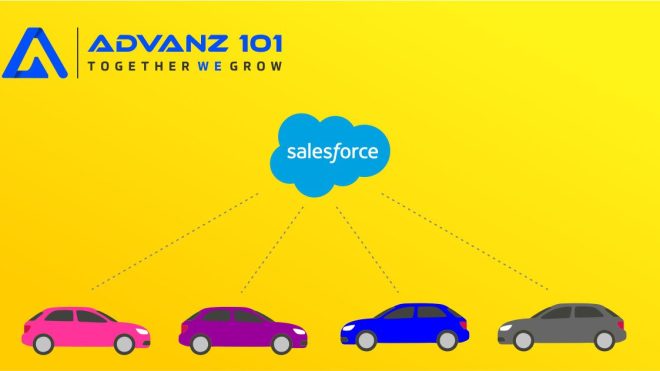Salesforce Automotive Cloud is a powerful platform designed to help automotive dealers manage their business operations more efficiently. Implementing this powerful tool requires careful planning and execution to confirm maximum efficiency and ROI. So, integrating exciting features of Automotive Cloud will promise:
- Enhancement of the sales process
- Successful inventory and dealership management
- Real-time automation to negate manual works
- Efficient Integration with existing applications
The article will look at the best practices for implementing Automotive Cloud in Salesforce.
Best Practices for Fruitful Implementation of Salesforce Automotive Cloud
I. Define Your Objectives
Before implementing Automotive Cloud Salesforce, it is a must to define the objectives. Automotive manufacturers need to identify the specific areas of business that they want to improvise. It will help in deciding the features and functionalities to achieve goals. For example, to enrich the lead management process, firms need to:
- Identify the sources of their leads
- Recognize Channels to capture them
- Sales funnel stages to optimize
So, using the given cloud solution, firms can utilize its lead management features to install lead capture forms, lead assignment rules, lead nurturing campaigns, and lead scoring models.
II. Plan Your Implementation
After evaluating the purposes, companies must work on its perfect execution. It involves identifying your needed resources, such as personnel, hardware, software, and training. Besides, automotive service providers must define the timeline for the milestones they want to achieve.
All stakeholders must take part in the planning procedure. They include the sales reps, service technicians, marketing team, and IT department. It will make certain that everyone is on the same track and meets the requirements of all departments.
III. Customize Your Solution
Salesforce Automotive Cloud is a highly customizable platform that is tailor-made to meet the precise needs of car dealerships. Customizing your solution to ensure that it aligns with your business processes and workflows is essential. They can customize solutions in two ways:
- Configuring the standard features and functionalities
- By developing custom applications using the Salesforce Platform
It needs to involve the IT department or a certified Salesforce partner in the customization process to guarantee that the solution is scalable, secure, and compliant.
IV. Train Your Employees
Training the workforce is a key aspect of applying Salesforce Automotive Cloud. To accomplish goals, automobile companies should train their employees, such as sales representatives, service technicians, and others, to use the platform in daily routine.
Further, there must be provision for offering training through various channels, like online courses, instructor-led training, and on-the-job training. Maintaining continual training and support is vital to ensure that workers get updates with the latest features and can easily use the platform.
V. Monitor Your Performance
Monitoring the performance is crucial to assert that auto firms are on their way to achieving their purposes. To make it happen, they need to track key performance indicators (KPIs) and metrics to identify areas for improvement. Besides, they can also check performance:
- Using analytics and reporting features from Salesforce Automotive Cloud
- By developing custom reports and dashboards using the given online podium
VI. Leverage AI and Analytics
Salesforce Automotive Cloud includes AI and analytics to help firms gain deeper insights into data and make more informed decisions. Likewise, they can use these tools to:
- Identify recent trends
- Predict customer behavior
- Optimize sales and marketing strategies
For example, they can incorporate these strategies to study customer data and describe patterns in their behavior. It will assist them in knowing the most:
- Profitable consumer segments
- Effective marketing channels
- Successful sales strategies
VII. Integrate with Existing Applications
Salesforce Automotive Cloud integrates with existing applications, such as ERP systems, marketing automation platforms, and even customer service software. Hence, companies can embed applications in Salesforce to:
- Simplify their procedures
- Reduce manual data entry
- Improve accuracy
For instance, a car dealer can integrate it with an ERP system to automate inventory management. As a result, it will produce:
- Lessen stockouts
- Optimize inventory levels
- Expand the order fulfillment process
VIII. Stay Up-to-Date with the Latest Features
Salesforce Automotive Cloud is an evolving platform with regular updates and new features. To harness its potential, it is vital to remain aware of the latest developments. Management of automobile firms can stay well-informed with the latest features by attending Salesforce events, such as Dreamforce, TrailheaDX, and local user groups. In addition, they can also follow Salesforce blogs, social media channels, and newsletters to stay informed about the latest updates.
Conclusion
Implementing Salesforce Automotive Cloud can help car dealerships manage their business operations more efficiently. Further, they can now focus more on enhancing interaction with their customers. Adhering to the excellent practices for Salesforce Automotive Cloud, you can ensure that your implementation meets your objectives, aligns with your business processes, and provides a seamless user experience. You may advance your car dealership while staying ahead of opponents with Salesforce Automotive Cloud.


